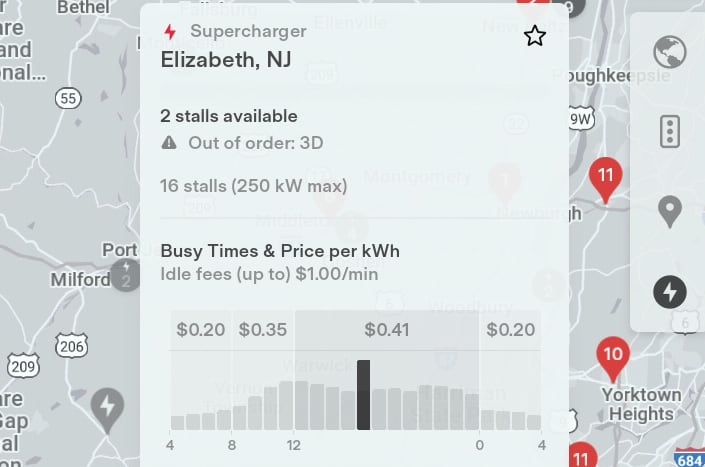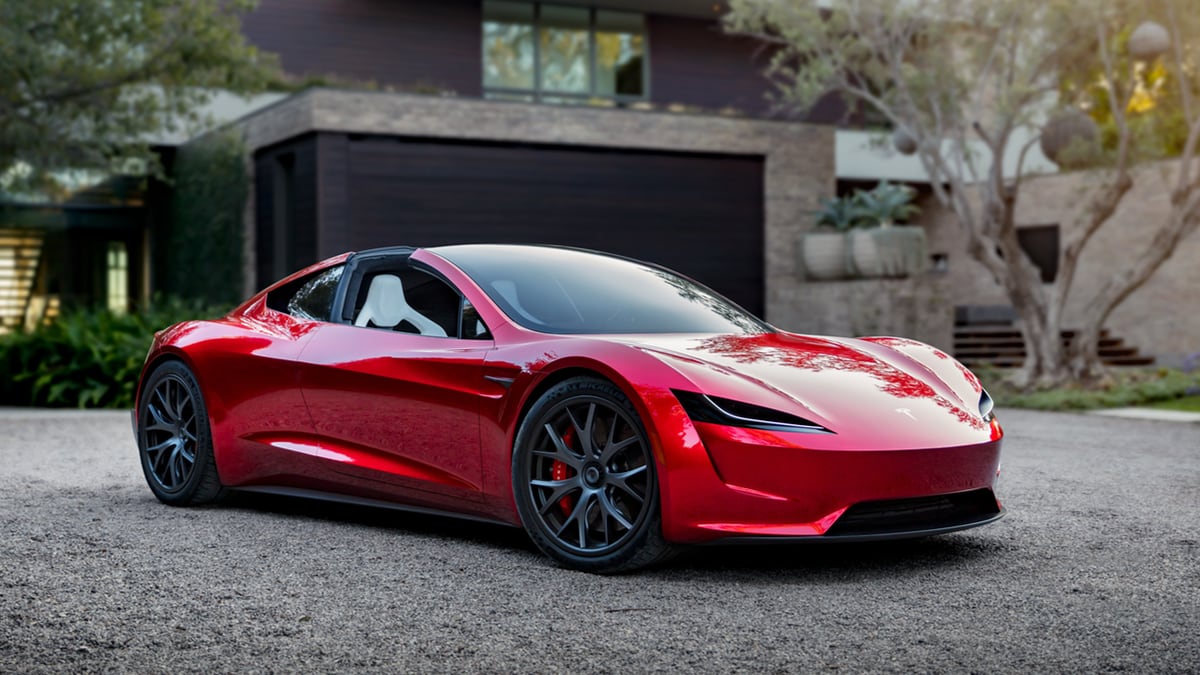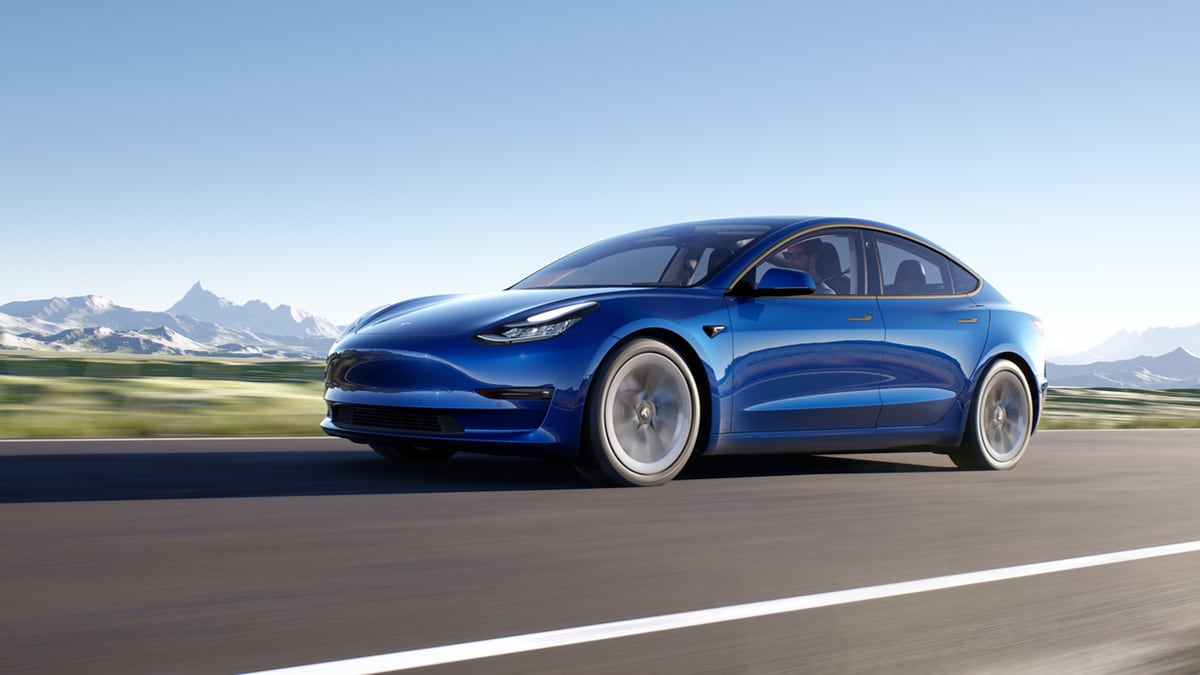By Gabe Rodriguez Morrison

Tesla has lowered Supercharging prices in numerous regions as its charging network expands.
Tesla's Supercharger network recently reached 40,000 chargers globally and is slowly becoming a significant part of their business. Tesla's global fast-charging network enables long-distance travel in electric vehicles.
Since EVs require less maintenance and electric vehicles use energy more efficiently, EVs are generally much cheaper to operate. However, the cost of electricity has increased significantly over the last year due to macroeconomic factors.
This price increase has trickled down to Supercharger fees and led to some locations charging as much as $0.50 per kWh (USD). While Supercharger is not meant for everyday charging, the recent price increases have caused traveling with a Tesla to be almost as expensive as roading tripping with your previous gas guzzler.
Tesla announced a major Supercharger price hike in Europe, where electricity costs have been especially high due to an ongoing energy crisis.
Tesla doesn't release global Supercharger pricing, but owners can see local Supercharger prices through the car's navigation system.
Reducing Prices
Slowly, prices are returning to the mean. Recently, Tesla owners across several regions have reported that Tesla has reduced prices at their regional Superchargers.
Tesla previously announced a price hike in California, but it appears now that prices are stabilizing. A Tesla owner in California reported that their local prices had dropped by as much as 5 cents per kWh, which is about a 10 to 15 percent decrease. Other owners in Europe saw similar price drops last week, however, some are now noticing increases as well.
Tesla appears to be changing their philosophy on Superchargers. Tesla used to consider Superchargers a necessity to be able to sell their vehicles, but now with 40,000 Superchargers worldwide, Tesla appears to be transitioning them into a profit center. That's not necessarily a bad thing. It means we'll likely continue to see the growth of Superchargers around the globe, allowing Superchargers to remain the dominant charging network.
Charging stations will always be influenced by utility rates but this is a sign that Tesla's charging business is becoming more financially sustainable.
Time of Day Pricing
In order to combat congestion, Tesla has started implementing time-of-day pricing at many Supercharger locations. In Tesla's recent 2022.36 update, Tesla will now display the time-of-day pricing at a given Supercharger location.
The volume of electric vehicles on the road has increased drastically in recent years and necessitates massive charging infrastructure. Tesla is adapting to serve these needs by slowly opening the Supercharger network up to non-Tesla EVs.
By Kevin Armstrong

Tesla's Chief Designer, Franz von Holzhausen, has designed the company's entire fleet of vehicles, but the Model S, 3, X, Y, Cybertruck and Semi are not his favorites. "My favorite one is the one that is coming.
I can't talk about (it)," von Holzhausen told CNBC. He then quickly pivoted the conversation away from that topic. Nevertheless, several rumored vehicles will be the next to carry the "T" logo. So, which one is the creative mind of Tesla referring to in his evasive answer?
Franz von Holzhausen Interview
Let's start with the suspects. A cheaper, smaller and less expensive electric vehicle has been predicted for years. More recently, there have been ideas about a van. And then there is the second generation of the highly anticipated Roadster. While von Holzhausen didn't talk about the next one, he did give some clues later in the interview. "My all-time favorite car is a '62 250 GTO (Ferrari). I mean, it is quintessential. It's an insane car. I'm also a big fan of this kind of wedge era. The early (Lamborghini) Countachs, the whole kind of flat, low sports car. Those were always the posters on my wall."
The Designer Loves Sports Cars
When a 54-year-old man reminisces about the cars featured in posters plastered on his wall when he was a kid, he is not excited about a van or a compact vehicle — no, he is excited about a sports car. The second-generation Roadster was unveiled in 2017 simultaneously with the Semi. But there hasn't been much mention of the sports car since. The company is just now delivering Semis, and Cybertrucks are expected in 2023, but the Roadster doesn't have an ETA. Or does it? The chief designer says, "… the one that is coming." So, we can only assume that the Roadster is next to hit the production line.
Tesla Roadster 2.0
A Designer Who has Changed the Industry
One of the first employees of Tesla back in 2008, von Holzhausen, recalls the early days and how things have changed. "There is a moment that I thought when I first joined Tesla that it would be great to see multiple Teslas in one drive experience around town. And now, it's hard to go anywhere without seeing a bunch of Teslas. So, it's great to see the impact that Tesla has had in people's lives but also how it's changed the industry. It really pushed this idea that an EV can be better than an internal combustion vehicle."
He also gave some insight into designing vehicles that have and continue to change the auto industry, "Tesla isn't beholden to what has been done in the past. We are always trying to push the boundaries and deliver on a promise of something fun, something enjoyable and something you would love to own and tell your friends about."
It looks like The Roadster could be the next fun, enjoyable vehicle to tell everyone about.
By Lennon Cihak

Tesla’s gearing up for a small "revamp" of its popular Model 3 vehicle, which is set to go into production in the middle of 2023.
According to Reuters, the revamp is called “Project Highland” and aimed at lowering the production costs and increasing the Model 3’s attractiveness and not because it needs a redesign. The Model 3 was launched back in 2017, and Tesla has already sold well over 1 million of them.
According to our sources, don’t expect a design overhaul of the Model 3, though. Instead, Project Highland will focus on reducing the number of components and complexity of the Model 3’s interior.
The main goal of this Model 3 revamp is to increase manufacturing efficiencies and reduce costs. Tesla would like to get the Long Range and possibly the Performance variants of the Model 3 to qualify for the US tax incentive for 2023. Under this tax credit, manufacturers’ suggested retail price for brand-new sedans must be less than $55,000. For SUVs, trucks and vans, the maximum price is capped at $80,000.
Our previous evaluation of the vehicles that would qualify include the Model 3 RWD, Model Y Long Range (AWD), and Model Y Performance. However, this will likely change once the revamp goes into production.
Do not expect new vehicle features to be added to the Model 3, such as a rear display, air suspension, or ventilated seats. These features would raise the price of the Model 3 and create a significant overlap between the Model 3 and the refreshed Model S.
Yoke Steering Wheel
One new feature that is possible in this Model 3 revamp is the introduction of a yoke steering wheel or more likely, a wheel similar to the Tesla Semi, which has capacitive controls and no stalks. The stalks are replaced with capacitive controls on the steering wheel and touch controls on the vehicle's display. We previously reported on this rumor in August.
Redesign Rumors
A few rumors are floating around online including a redesigned front bumper and removal of door handles in exchange for touchless doors like the Cybertruck and Roadster 2.0, although our source tells us that this is cool, but not accurate.
2023 Model 3 Update
Based on recent rumors
— Alwin (@Alwinart) November 29, 2022
-Bumper facelift (in line with Y/S/X)
-No door handles, wing mirrors or ultra sonics (as Cybertruck) pic.twitter.com/GQ5k64bV4O
The revamped Model 3 is likely to remain without its ultrasonic sensors, as Tesla is beginning its transition to its own Tesla Vision. This technology uses the vehicle’s onboard cameras and vast amounts of data from the neural net to function.
Over the past few years, Tesla has made significant efficiencies in the way it builds and manufactures vehicles. Recently, the Model Y switched to a single-mold front casting. This requires 169 fewer pieces and 1,600 fewer welds. To achieve this, Tesla is using its Giga Presses at its Berlin Gigafactory.
Bagikan Berita Ini














0 Response to "After reaching record highs, Tesla starts lowering Supercharger prices - Not a Tesla App"
Post a Comment